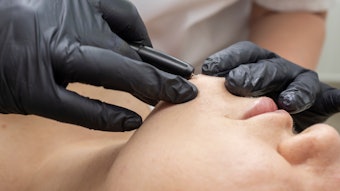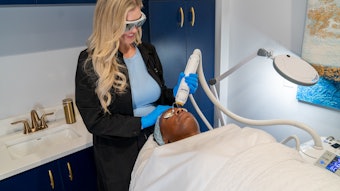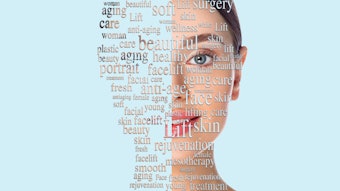
Non-physicians such as nurses, aestheticians and cosmetologists administer laser treatments in medspas with proper training and supervision established by a licensed physician, though rules and regulations vary nationwide. While non-physicians may be licensed in laser modalities, they may lack in-depth dermatologic knowledge of skin types and conditions, increasing the risk of burns, scarring or ineffective treatment, especially those unsupervised [1]. In recent studies, AI imaging has shown the potential to support licensed providers in making more precise skin assessments to avoid potential complications in medspas.
A 2020 study by Dermalogic Surgery [2] reported the percentage of complications seen in medspas ranged from 61% to 100%, with the most commonly cited complications being burn, discoloration and misplacement of product. Among the most commonly cited treatments resulting in complications was laser hair removal.
This leads practitioners to believe medical spas could be endangering patient safety as outcomes in medical spas were rated as inferior to physician-based practices—calling for stricter regulations [2]. Fortunately, machine learning models have recently shown capability in predicting multiple skin characteristics from color photographs of the face, evaluating skin characteristics such as Fitzpatrick skin type, hyperpigmentation, redness and wrinkle severity simultaneously [3].
How AI Technology Enhances Skin Analysis in Cosmetic Dermatology
AI‐based imaging platforms help supplement dermatologist-level assessment by detecting UV damage, redness and pigmentation irregularities to support treatment protocols for a comprehensive and individualized laser therapy, though trained manual judgement by a licensed professional in administering lasers is necessary.
Azza Halim, MD, a board-certified physician and anesthesiologist, who has been mentored and trained by surgeons and dermatologists, creates anti-aging treatments at her practice where she specializes in laser therapy.
As a physician, she conducts a consultation consisting of visual skin analysis, patient intake forms and often a Fitzpatrick skin typing questionnaire along with Emage imaging and quantificare 3D digital photography to evaluate pigmentation, vascular conditions, pores, chronological vs biological age, photo damage and wrinkle depth.
AI and laser technology has become a strong collaboration in cosmetic dermatology, marked by improved outcomes and greater safety and personalization for practitioners in medspas and even physicians–both of which may lack an in-depth background in dermatology specifically.
“Subtle pigmentation issues or vascular concerns are not easily visible to the naked eye, and lighting conditions or even makeup can mask true skin characteristics which is why I start with a clean face along with imaging systems to accurately evaluate all skin types and determine what products and lasers are best for them to avoid risk of complications like PIH or burns,” Halim says.
AI in Aesthetics: A Support Tool, Not a Substitute for Clinical Judgment
This, Halim says, is why digital imaging is very valuable compared to manual methods that have limitations.
The machine learning model, EfficientNet‐V2M architecture, was among the best performing in analyzing skin [3]. On average, the model achieved an accuracy of 85.41% on the test set across all labels, while the average AUROC was 0.83 [3], demonstrating that AI-driven dermatologic assessment models can analyze the skin on a dermatologist-level for laser therapy planning.
In the future, similar models could assist non‐dermatologists in patient skin evaluation to enhance treatment planning to avoid cited complications [2], as 81% of med spas surveyed in Chicago alone did not have a supervising physician on site [4]. Regulations, however, differ by state.
Cindy Vo, BSN, RN, an aesthetic registered nurse at Serenity Aesthetics & Wellness, who also specializes in laser therapy, says as a registered nurse she cannot make diagnoses, which can be challenging during consultations, but to manually assess the skin, she visually examines the patient’s skin tone and quality and evaluates textural changes, such as scarring or raised lesions through touch, making notes of diagnosed conditions like melasma or rosacea.
“I would be open to using AI technology, but I would use it alongside my own clinical assessments rather than relying on it entirely,” Vo says. “Having objective and consistent data, especially for detecting subtle pigment changes, would be a valuable tool to support decision-making.”
Her main concern is that newer devices can be affected by factors like poor lighting or software malfunctions, which can impact accuracy. Even with regular photography, lighting conditions can differ significantly from what is seen in person, she says, so she would continue to do traditional assessments, but incorporate AI tools to aid.
The Ideal AI for Laser Therapy: Enhancing Safety, Customization and Communication in Aesthetic Care
An ideal AI tool for Vo would support skin typing, identify patient skin goals and timelines and help develop customized treatment protocols, along with built-in risk flagging for conditions or contraindications. It would also be valuable for tracking progress over time, integrating seamlessly with EMR systems, and providing patient-friendly visuals to clearly explain treatment options and expected outcomes, she adds.
Halim, though she currently utilizes imaging systems to assess skin quality as a physician, says an AI-based Fitzpatrick and/or Baumann skin typing along with automated detection of pigmentation, redness and texture issues would help her treatment plans. Educational value explaining risk factors or suggesting pre/post-care tips would also be beneficial, she adds.
“Currently the system I use integrates some of this but would be better if it was all encompassing,” Halim adds.
While AI-assisted tools have proven to be useful to physicians like Halim in skin detection, manual methods using discernment is crucial, as Halim and Vo agree, saying that AI would absolutely support better outcomes yet will not replace clinical assessments and decisions, with ways to go with accuracy and inclusivity. As AI assists in skin assessments to avoid potential risks or harm, judgment in treatment direction and proper use of modalities from physicians and licensed practitioners is here to stay.
“I do think AI will become a standard tool, especially as client expectations for precision and personalization continue to grow, and as we see the medspa industry evolving quickly, AI has the potential to raise the bar in safety, accuracy and outcomes,” Halim says. “Of course, adoption and implementation will depend on cost, training and the reliability of the technicians; it’s only a matter of time.”
References:
3- https://pmc.ncbi.nlm.nih.gov/articles/PMC11938992/#jocd70050-bib-0005











